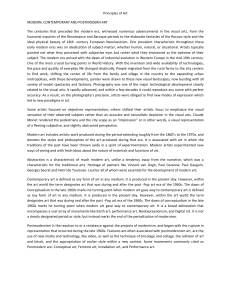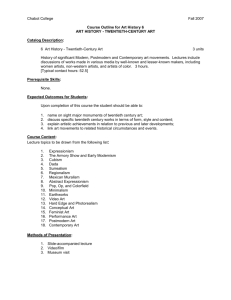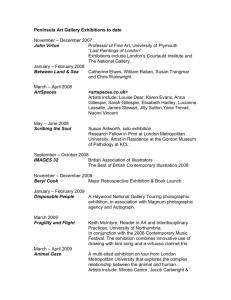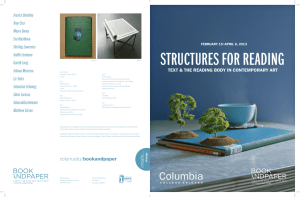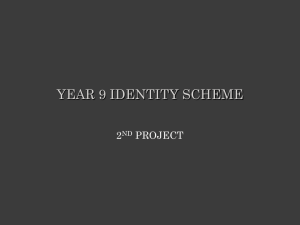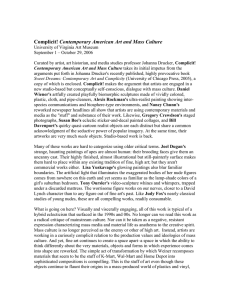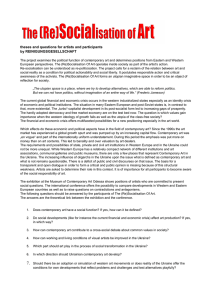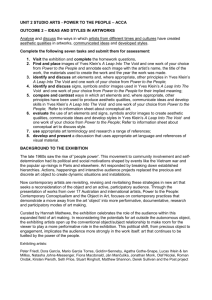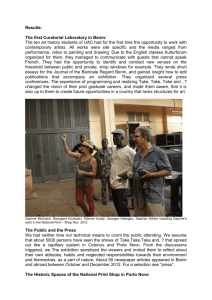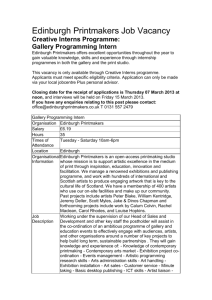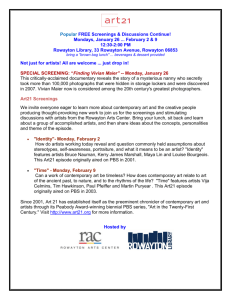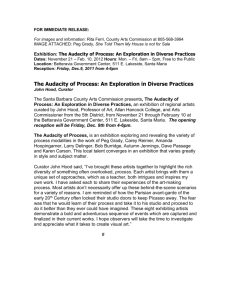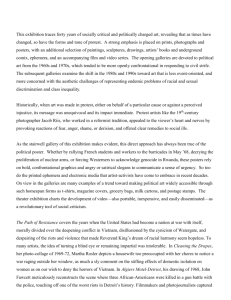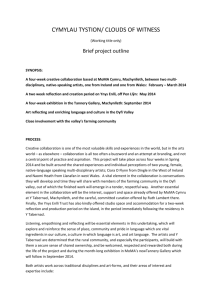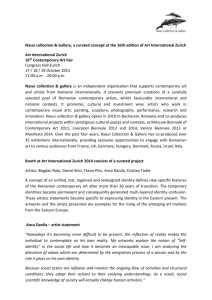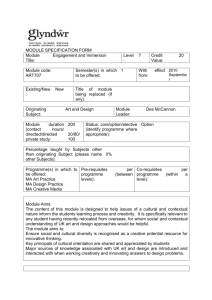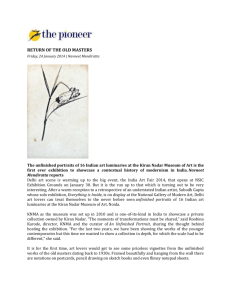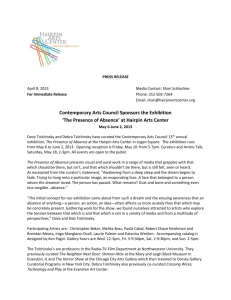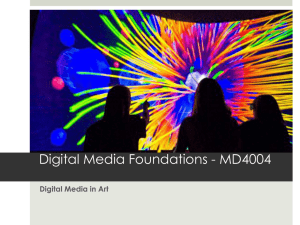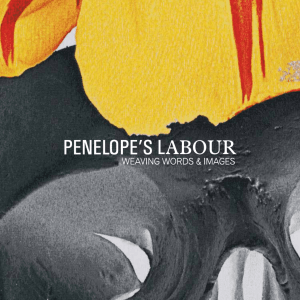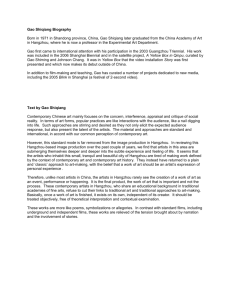Repetition 9 Press Release
advertisement
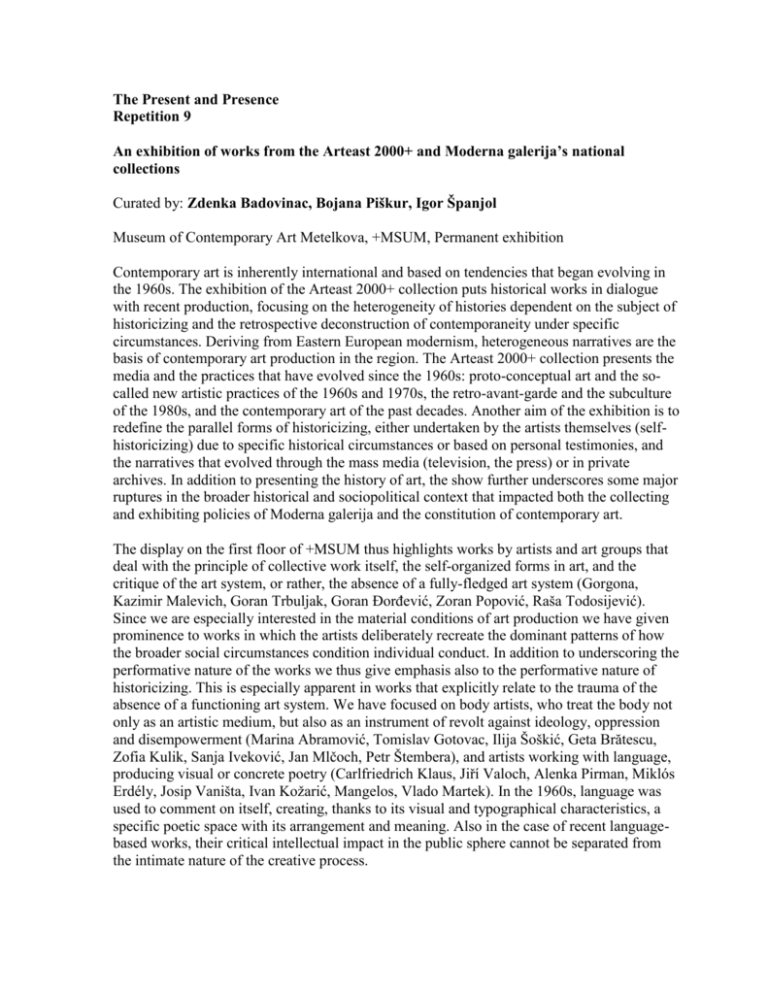
The Present and Presence Repetition 9 An exhibition of works from the Arteast 2000+ and Moderna galerija’s national collections Curated by: Zdenka Badovinac, Bojana Piškur, Igor Španjol Museum of Contemporary Art Metelkova, +MSUM, Permanent exhibition Contemporary art is inherently international and based on tendencies that began evolving in the 1960s. The exhibition of the Arteast 2000+ collection puts historical works in dialogue with recent production, focusing on the heterogeneity of histories dependent on the subject of historicizing and the retrospective deconstruction of contemporaneity under specific circumstances. Deriving from Eastern European modernism, heterogeneous narratives are the basis of contemporary art production in the region. The Arteast 2000+ collection presents the media and the practices that have evolved since the 1960s: proto-conceptual art and the socalled new artistic practices of the 1960s and 1970s, the retro-avant-garde and the subculture of the 1980s, and the contemporary art of the past decades. Another aim of the exhibition is to redefine the parallel forms of historicizing, either undertaken by the artists themselves (selfhistoricizing) due to specific historical circumstances or based on personal testimonies, and the narratives that evolved through the mass media (television, the press) or in private archives. In addition to presenting the history of art, the show further underscores some major ruptures in the broader historical and sociopolitical context that impacted both the collecting and exhibiting policies of Moderna galerija and the constitution of contemporary art. The display on the first floor of +MSUM thus highlights works by artists and art groups that deal with the principle of collective work itself, the self-organized forms in art, and the critique of the art system, or rather, the absence of a fully-fledged art system (Gorgona, Kazimir Malevich, Goran Trbuljak, Goran Đorđević, Zoran Popović, Raša Todosijević). Since we are especially interested in the material conditions of art production we have given prominence to works in which the artists deliberately recreate the dominant patterns of how the broader social circumstances condition individual conduct. In addition to underscoring the performative nature of the works we thus give emphasis also to the performative nature of historicizing. This is especially apparent in works that explicitly relate to the trauma of the absence of a functioning art system. We have focused on body artists, who treat the body not only as an artistic medium, but also as an instrument of revolt against ideology, oppression and disempowerment (Marina Abramović, Tomislav Gotovac, Ilija Šoškić, Geta Brătescu, Zofia Kulik, Sanja Iveković, Jan Mlčoch, Petr Štembera), and artists working with language, producing visual or concrete poetry (Carlfriedrich Klaus, Jiří Valoch, Alenka Pirman, Miklós Erdély, Josip Vaništa, Ivan Kožarić, Mangelos, Vlado Martek). In the 1960s, language was used to comment on itself, creating, thanks to its visual and typographical characteristics, a specific poetic space with its arrangement and meaning. Also in the case of recent languagebased works, their critical intellectual impact in the public sphere cannot be separated from the intimate nature of the creative process.
